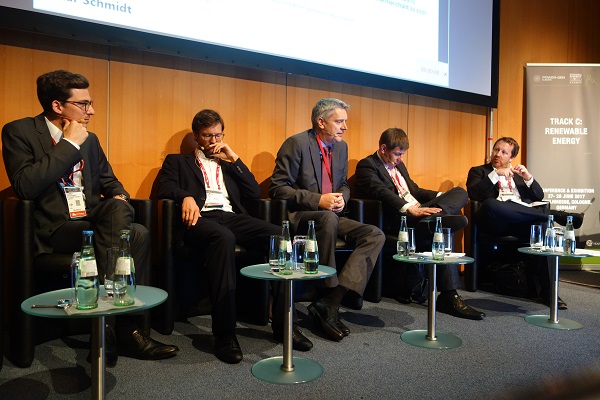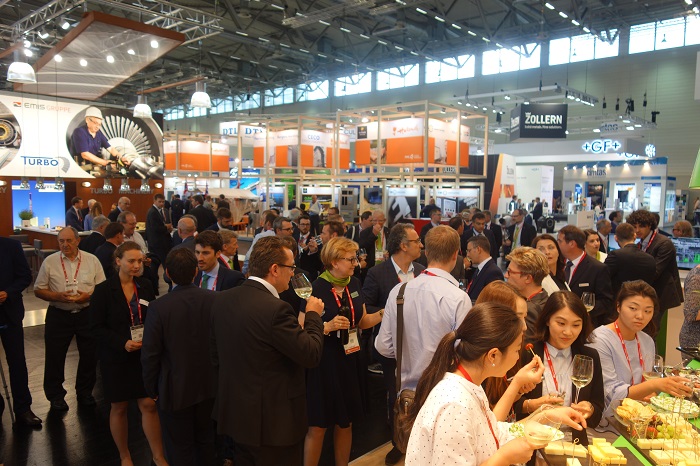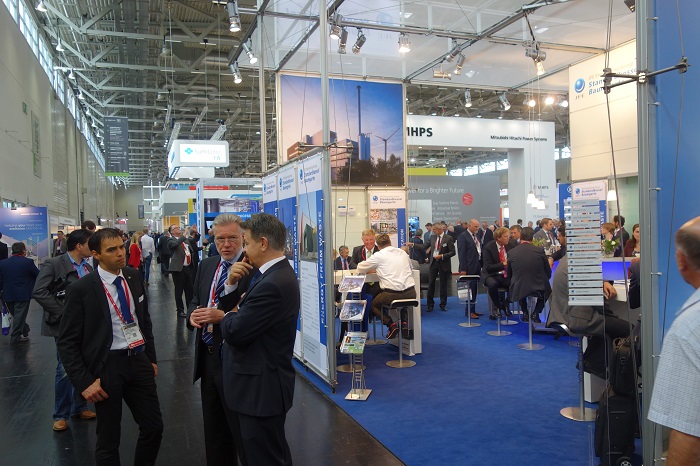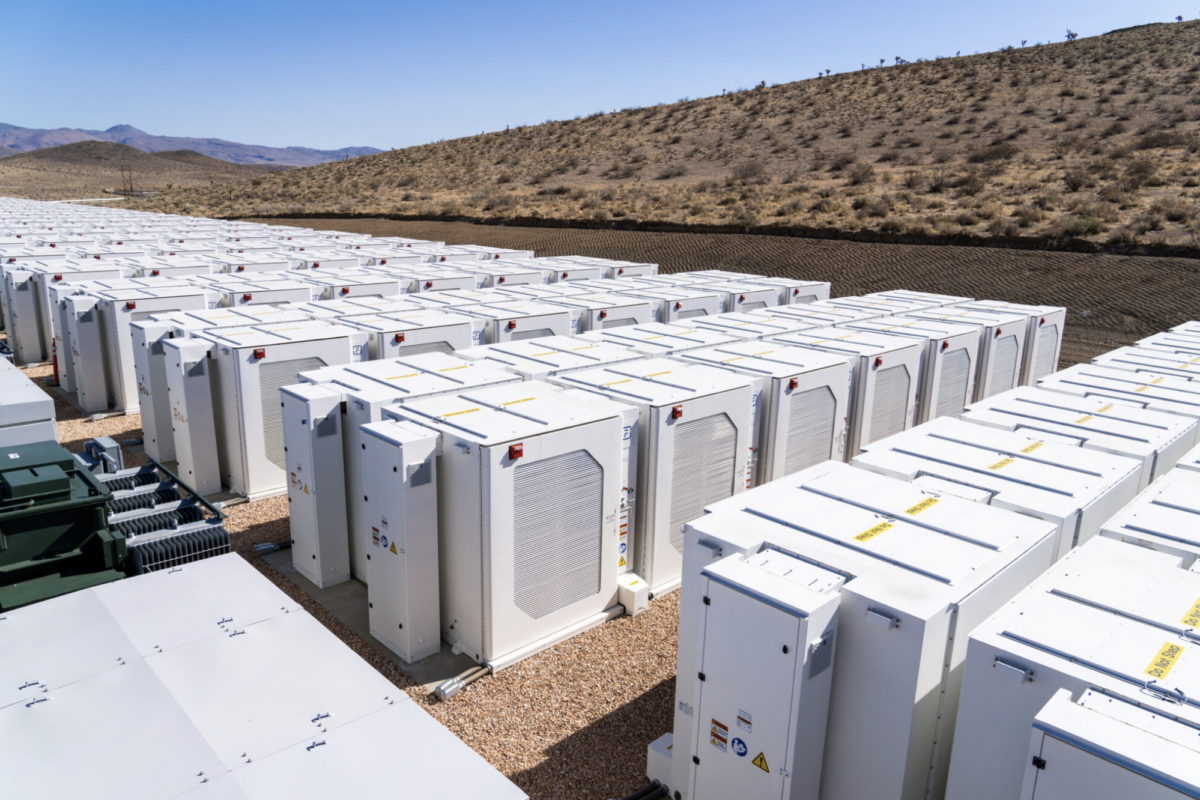As a first-time attendee to this event I was told PowerGen Europe has a comparable relevance for the conventional power industry in Europe as Intersolar Europe has for the solar community.
With 440 exhibitors and visitors from more than 100 countries, PowerGen Europe is significantly smaller than Intersolar Europe, which in comparison drew 40,000 visitors and had more than 1,100 exhibitors.
Coming from the renewable energy space, two observations struck me the most: the conference programme of this year’s event, which was split up into 50 sessions and featured 260 speakers, allocated more attention to the “new energy world” (i.e. renewables, storage, distributed generation and digitisation) compared to the conventional energy world. The conference featured seven parallel ‘tracks' covering the following topics:
- Strategies for change
- Mastering the digital era
- Renewable Energy
- Integration & Energy Storage
- Gas fired generation
- Steam based generation
- Modern plant management
Those first four tracks deal with the new energy world, while the latter three address legacy technologies. Speaking to Crispin Coulson, marketing team leader from the conference and trade fair organizer PennWell, he admitted that the focus of the conference had shifted considerably over the past few years.
Whereas in Amsterdam two years ago still more than 70% of the conference papers addressed issues related to conventional power generation, in Milan last year the share of papers covering topics surrounding carbon-based power generation had already dropped to around 60%.
This year’s even in Cologne marked the first year where the weighting of the conference program accurately reflects the fact that Europe-wide net electricity generation capacity additions only occur on the renewable side, whereas conventional capacities are increasingly phased out.

Views of the world
Nonetheless, some of the discussions that followed the conference presentations revealed that a significant proportion of attendees and speakers are still drawn from the conventional power industries, with concerns, questions and attitudes stuck in the first decade of this century when it came to their views on renewables.
Prof. William D’haeseleer from KU Leuven Energy Institute in Belgium claimed in his presentation that none of the incentives and subsidies spent in Europe on creating a market for wind and solar electricity had saved a single ton of carbon dioxide emissions. From this (incorrect) hypothesis he concluded that all the incentives allocated to renewables were completely ineffective in tackling the carbon dioxide emissions problem.
He stated that while in Europe renewables were displacing conventional power plants, India and China have been adding coal fired power plants on a weekly basis.
Prof. D’haeseleer is seemingly unaware of the fact that in 2016 China was by far the biggest single market globally for new installations of renewable power generation assets, and has massively cut down on its originally planned investments in coal-fired power plants. Furthermore, India exhibited the biggest increase in renewable power generation capacities on a percentage scale last year and is considerably scaling back new investments in conventional power plants as well.
Other industry veterans from the conventional power industry controversially stated that renewables were a luxury hobby of wealthy countries such as Denmark and Germany, but offered no viable option for the vast majority of the global population living in poorer countries around the world.
Statements like these reveal that even many engineers from the conventional power generation industry continue to ignore the fact that today, for a greenfield investment in new electricity generating assets in most parts of the world, wind and solar power offer the most cost-competitive options.
Just because the detrimental effects of the emissions of conventional power plants are by no means reflected in the current prices for carbon dioxide emission certificates (if countries have at all implemented such schemes) does not mean that this form of energy generation is indeed cheaper than renewable power.
It might be cheaper for the owners of conventional power plants, but from the perspective of the society this type of electricity generation is far more expensive than renewable energy if all externalized costs are factored into the equation.
So while almost all participants eagerly joined in in the bashing of politicians for being ignorant about the actual needs of the power generation industry, I was not really convinced that most of the delegates present at the conference were really that much better educated than the politicians they looked down on.
On with the show
Roaming the floors of the two exhibition halls that PowerGen Europe covered, I had a hard time evidencing the claim made by the organiser that 20% of the exhibitors were representatives of renewable power generators.
All I saw were manufacturers of turbines, valves and other equipment relevant for conventional power generation. Overall one did not get the impression that a lot of new business was being discussed at the trade fair, which doesn’t really come as a huge surprise.
After all, who dares to invest in new conventional power based generation assets in 2017 with the very real fear that such an investment will become obsolete within a decade or even less?

In fact, the only booths that really drew the attention of visitors were those offering free wine tasting. I counted at least four booths that offered wine tasting (at 2pm in the afternoon) and considered the idea that offering free alcoholic beverages to participants was motivated by a collective need to console attendees mindful that they were representatives of a dying industry, or even a ploy by companies to attract tipsy customers who then might actually be more inclined to risk an investment in new assets of an industry on the retreat.
For 2018, PennWell has tellingly decided to rebrand the trade fair and conference. Held next year between June 19 – 21, the industry will convene in Vienna under the umbrella name of “Electrify Europe”. Could this name change finally uncork some of the stuffy ideas of old, and let renewable energy finally breathe?
Author: Götz Fischbeck
This content is protected by copyright and may not be reused. If you want to cooperate with us and would like to reuse some of our content, please contact: editors@pv-magazine.com.



Good article- most of the representatives of the “old world” will not make it into the New Energy World- as many are quite old they even don`t have to as pension is waiting. For the younger and really interested once they should go to the “New Energy World” Meeting- like our coming Forum New Energy World Conference in Nov 17 in Berlin- over 800 creators of the new world make the new system real:
http://neue-energiewelt.de/en/forum-neue-energiewelt/18-forum-neue-energiewelt-2017/